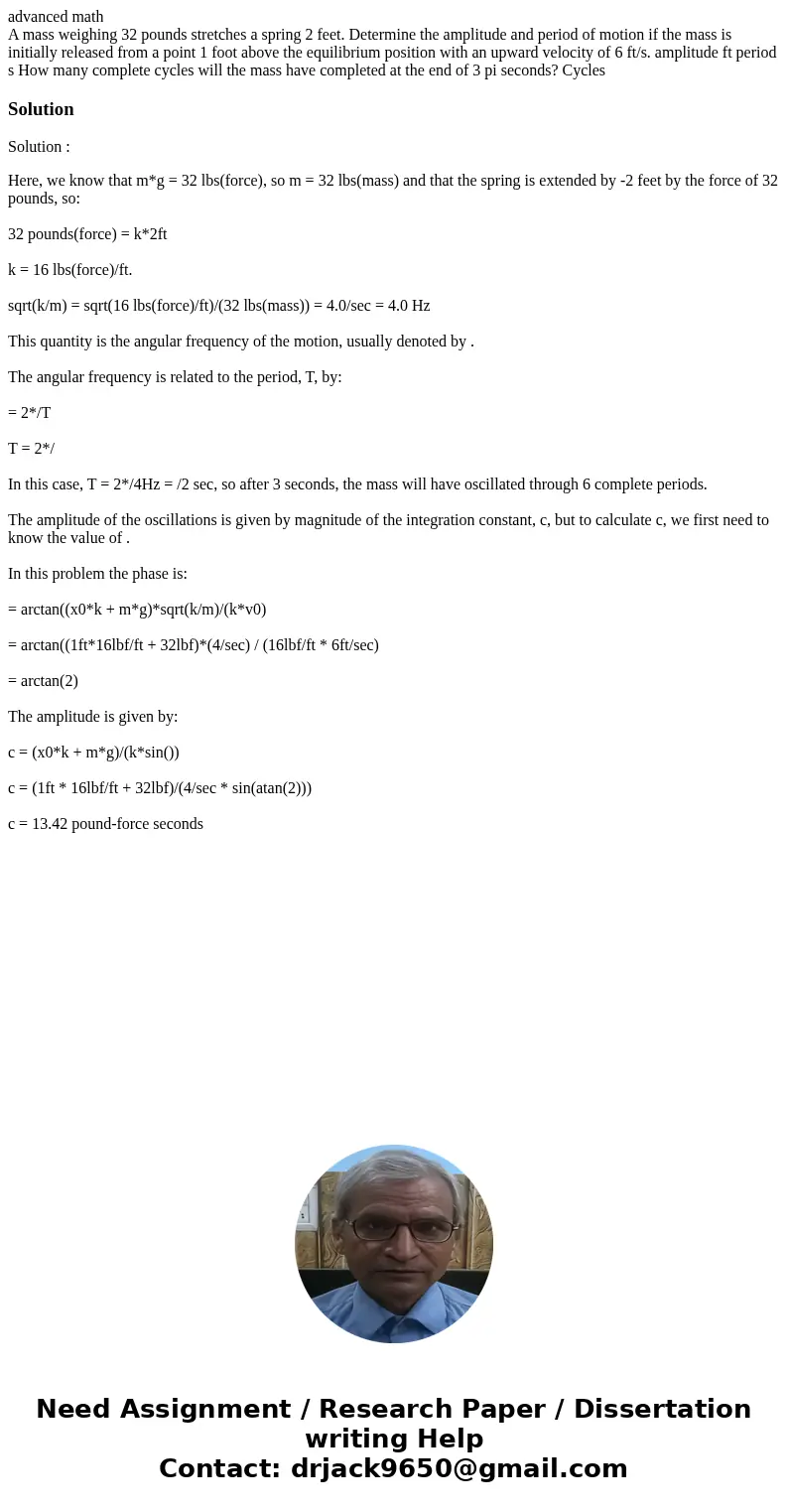advanced math A mass weighing 32 pounds stretches a spring 2
Solution
Solution :
Here, we know that m*g = 32 lbs(force), so m = 32 lbs(mass) and that the spring is extended by -2 feet by the force of 32 pounds, so:
32 pounds(force) = k*2ft
k = 16 lbs(force)/ft.
sqrt(k/m) = sqrt(16 lbs(force)/ft)/(32 lbs(mass)) = 4.0/sec = 4.0 Hz
This quantity is the angular frequency of the motion, usually denoted by .
The angular frequency is related to the period, T, by:
= 2*/T
T = 2*/
In this case, T = 2*/4Hz = /2 sec, so after 3 seconds, the mass will have oscillated through 6 complete periods.
The amplitude of the oscillations is given by magnitude of the integration constant, c, but to calculate c, we first need to know the value of .
In this problem the phase is:
= arctan((x0*k + m*g)*sqrt(k/m)/(k*v0)
= arctan((1ft*16lbf/ft + 32lbf)*(4/sec) / (16lbf/ft * 6ft/sec)
= arctan(2)
The amplitude is given by:
c = (x0*k + m*g)/(k*sin())
c = (1ft * 16lbf/ft + 32lbf)/(4/sec * sin(atan(2)))
c = 13.42 pound-force seconds

 Homework Sourse
Homework Sourse